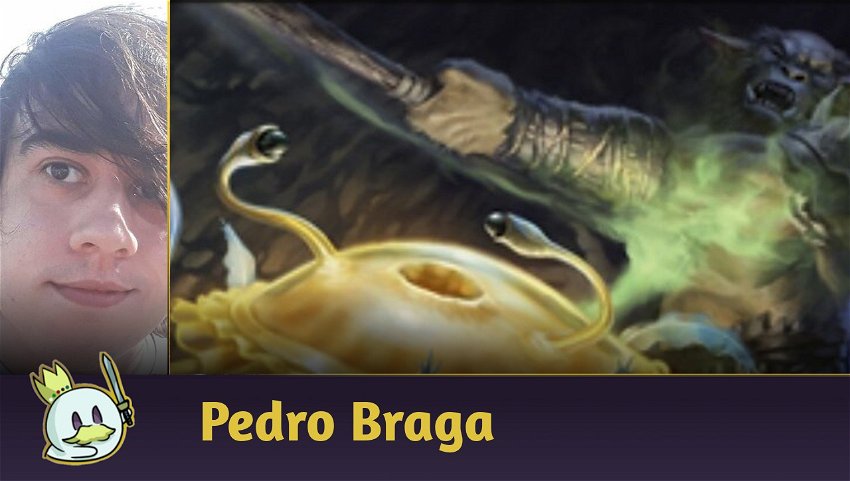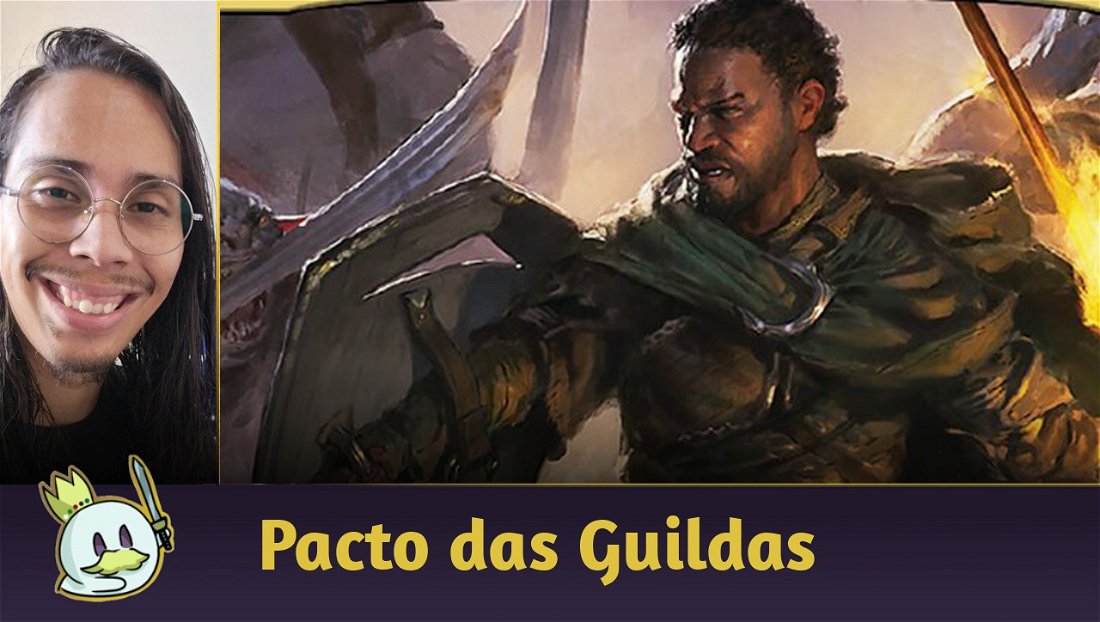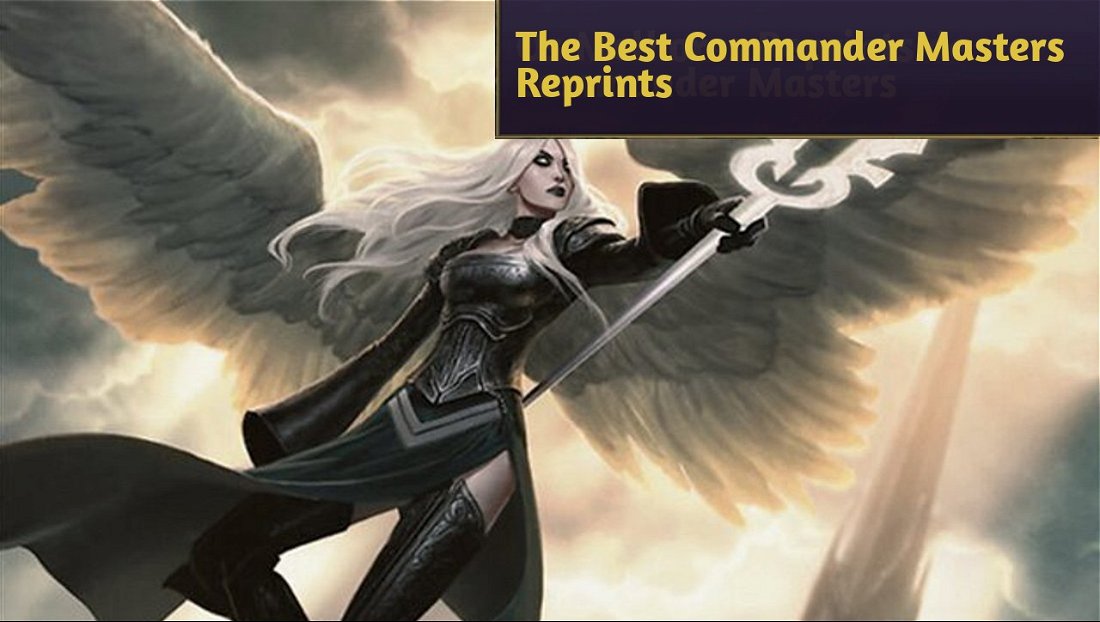As we delve deep into Magic: The Gathering's transformations, it gets clear that it is much more than a simple card game; it is an experience in constant evolution, capable of challenging the creativity of players. When new cards are released, many times we are faced with the curious phenomenon of cards which were considered weak or irrelevant becoming powerful pieces in the game when they interact with the new additions.
The introduction of new mechanics and interactions can give a new life to these forgotten cards, surprisingly valuing their abilities and potential.
That happened recently with Flumph, a lively jellyfish from Adventures in Forgotten Realms, which skyrocketed in price and use suddenly, thanks to good results conquered by the player ANNNDWHAMMY at the Magic: The Gathering Modern (MTGO) leagues, with an entirely new deck with eye-catching 63 cards.
In today's article, we'll analyze the deck which made Flumph suddenly skyrocket from a forgotten card in the corner, costing just a few cents, to a sold-out card in many of the biggest stores in the world, its price rising until now.
Understanding the Combo

Before we discuss the deck as a whole, we'll explain how Flumph and the combo which uses it work together. Flumph is a white creature with Defender and Flying, coming straight from the Dungeons & Dragons books, and released in Magic in the Adventures in the Forgotten Realms set. The effect we'll use from Flumph is the following: Any time Flumph suffers damage, you and the target opponent draw one card each.
For a long time, it was a weird and unwanted effect in duel-formats. Defending yourself from attacks and drawing cards is an appealing ability, but not at the expense of providing draws for your opponent as well. Against an Aggro deck, such as a Burn or Prowess deck, forcing your opponent to draw cards can be bad for your health. Besides that, Flumph is a rare card, which could very well ruin your sealed play or any boosters you bought for fun.
Coming into recent times, we just got the The Lord of the Rings: Tales of Middle-earth set, with characters from the creative setting of J.R.R. Tolkien's work, and in this set came the golden ticket that would help Flumph win at life:

Orcish Bowmasters is arguably the best card in the set, alongside The One Ring. Its Flash ability allows it to play more retroactively and fit in at the best moment possible, causing great harm to your opponent.
Orcish Bowmasters' ability deals one damage to any target, and Amasses Orcs 1 when entering the board and every time the opponent draws a card that isn't the first card they draw on their turn. With that, it is possible to draw up a broad game plan in our heads:
Flumph is on board, Orcish Bowmasters come in dealing damage to Flumph. The jellyfish takes damage, and you and your opponent draw a card. Did your opponent draw a card which isn't the one in their drawing step? Bowmasters deal one more damage to Flumph, forcing them to draw one more card and...
But wait, isn't Flumph's resistance only 3?

So that our Flumph is dealt an infinite amount of damage from Orcish Bowmasters, we count with a good number of cards which can give this creature Indestructible.
As our Flumph is Indestructible now, we can draw cards and deal damage to it with our bowmasters indefinitely, until you completely mill the opponent's deck. As the effect of this card is symmetrical and gives cards to both sides of the table, it is important that we always have more cards in our deck than our opponent, and that is why our deck has 63 cards, instead of the usual 60.
Once Yorion, Sky Nomad is banned in Modern, the chances of us facing a deck with a number of cards which is higher than usual are quite slimmer, which makes 63 a perfect number to give you the advantage always.
The Modern Deck
The deck used by the player ANNDWHAMMY was the following:
This deck can not only finish matches with its direct combo on turn 3 but also, as well, through this list, we can see that it can do that with great consistency. A good portion of the decklist is made up of the combo pieces and ways of finding them.

Imperial Recruiter and Eladamri’s Call are in the deck as tutors so that we can find Flumph and Orcish Bowmasters more consistently and safely, in a way that we can always play our combo as clean as possible.
Even tutoring one of these creatures in the deck, we can still finish our combo on turn 3, in case we have opened our turn 1 with Aether Vial, which not only helps a lot against Control decks, as it also allows your strategy to keep the same rhythm without harming your deck with having to spend mana with tutors.

We also have in the deck a side geared more towards controlling and stalling the game a bit, in the shape of cards such as Teferi, Time Raveler and Thoughtseize, which are very useful to disarm your opponent from using a specific card.
Giver of Runes, on the other hand, does its job by protecting our creatures from removals such as Solitude, Lightning Bolt and others. The only care we must have with Giver of Runes is being careful to not give protection against Black to Flumph at the turn we intend to do our combo, once that will make Orcish Bowmasters unable to target the jellyfish.
Gut Shot works more interestingly, being able to remove small threats, such as Ragavan, Nimble Pilferer, and even be the start of Flumph's combo in case the bowmasters are already on board and the white creature came afterward, adding a bit more versatility to the order in which the combo is made.

In our mana base, we use many lands that create five color mana, even more so as this is a deck that really uses Magic's whole palette of colors. But we also use four Concealed Courtyard, a fastland which uses two main creature colors to try and make the combo happen as soon as possible.
The Sideboard
The sideboard used in this deck tries to reign in situations which will delay or make your combo harder, and we'll usually remove Teferi, Time Raveler or some of the many higher-cost cards which bring redundancy to the combo and are out of the deck's most basic colors, such as Imperial Recruiter, which costs three mana, one of them Red, making the combo a bit more expensive and in need of a way to create one Red mana.
Aether Vial can be removed against decks which usually harm artifacts and can get Karn, the Great Creator and Collector Ouphe with a certain consistency.

Leyline of Sanctity can hold off the advances of a great majority of Aggros, giving you Hexproof, or against cards such as Thoughtseize, which can remove specific combo pieces from your hand. Damping Sphere also covers you well against aggressive decks which play many spells consecutively or decks which create a lot of mana at the same time, such as Tron. To face enchantments, artifacts or very strong specific lands, we can count with Boseiju, Who Endures.
Lavinia, Azorius Renegade deals really well against cards such as Solitude, Fury and Cascade decks, which create monstrosities such as Crashing Footfalls for free. That becomes even more useful in a world after Pro-Tour Barcelona, when decks such as the rhinoceros tokens creator have shown themselves to be, once again, very powerful.
The most interesting part about the sideboard is regarding your opponent. It is quite common that your opponent decides to bring on the approach of adding the 15 cards from their side to their deck, as the amount you mill is based on how many cards you have in your deck, and you can take two approaches to that.
The first is go along with your opponent and place those same cards in your deck too, which, not only can, but will harm your deck's consistency a lot. The second and safest one is to use Orcish Bowmasters' Amass ability to create very sturdy tokens really early on, and take advantage of the shaken up consistency in your opponent's decks.
Possibility in Historic
The great majority of the cards used in this combo are in Magic Arena, which allows its use in formats such as Historic and Alchemy, with just a few minor changes. A very interesting addition is the presence of Sheoldred, the Apocalypse, which is capable of dealing damage to the opponent at each of their card draw, without the need of milling your opponent's entire deck.
Below we have a build of Bo1, focused on an approach with two colors, Orzhov:
Final Words
As any deck that comes up suddenly as a new trend, we have to keep an eye out before we invest in it. Like I said, Flumph is very hard to find and costs a reasonable price, and, even then, we still don't know anything about its future. Maybe, it's an extremely oppressive deck which will completely harm the metagame in Modern and Historic, or, perhaps, as soon as people add in their 15 cards from their sideboard to the deck, its consistency is over.
My real hope for this deck is that it is absorbed into the metagame with the rest of the decks, becoming an extremely solid option, and that it makes the Modern format metagame quite colorful.
That is all for today! Don't forget to comment on this article and share it on social media to help support our work.
See you later!















— 评论 0
, 反应 1
成为第一个发表评论的人